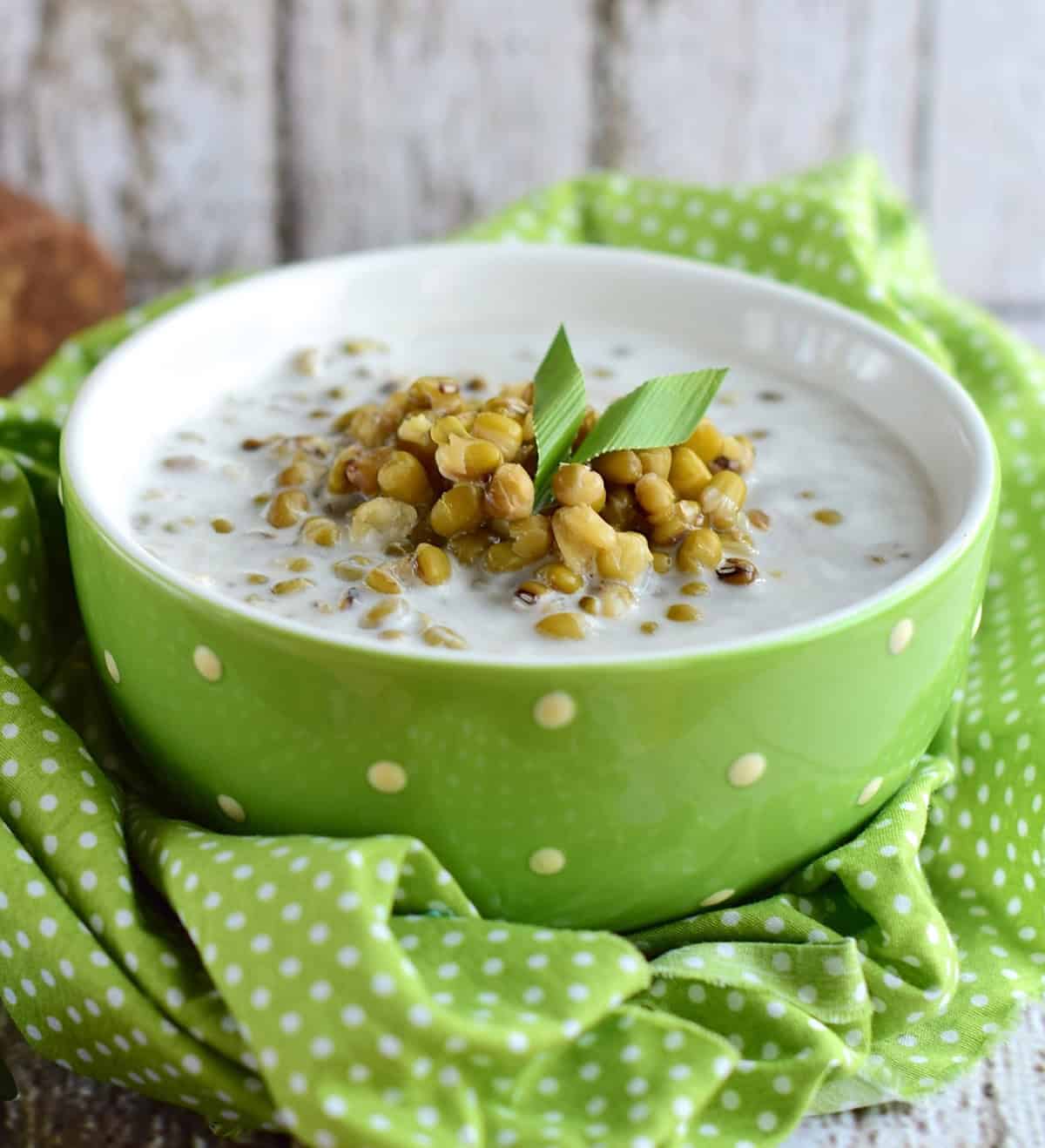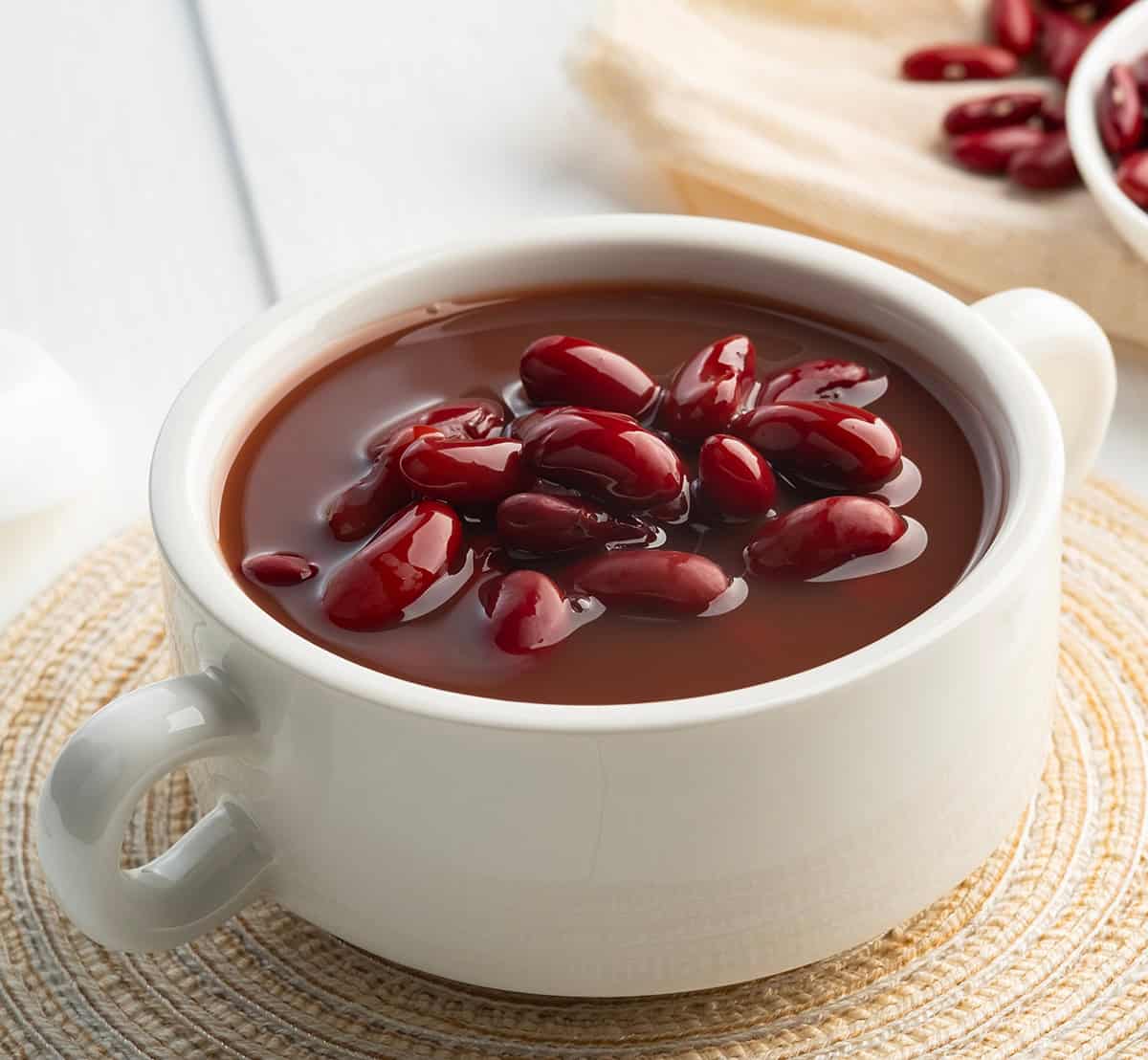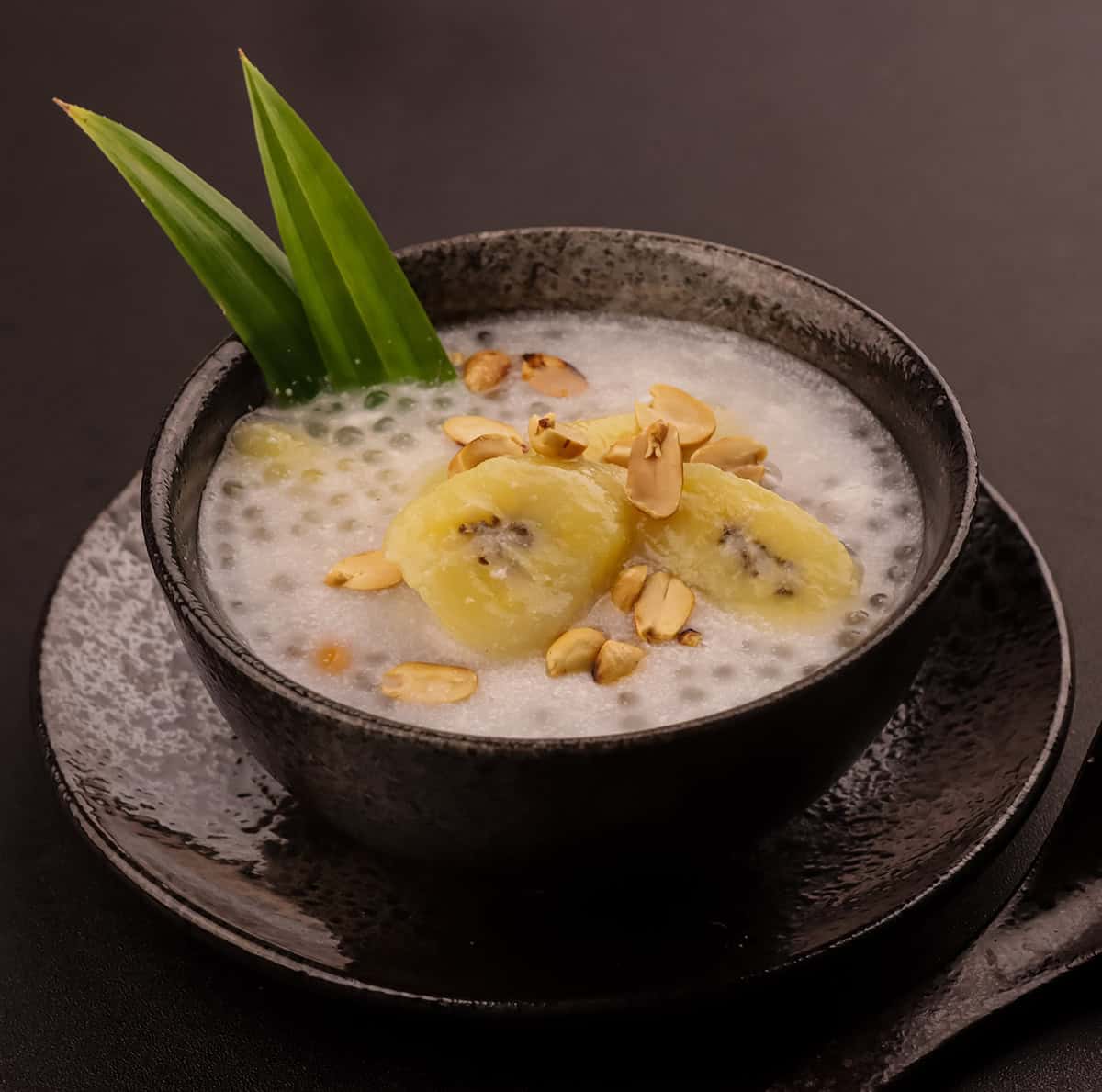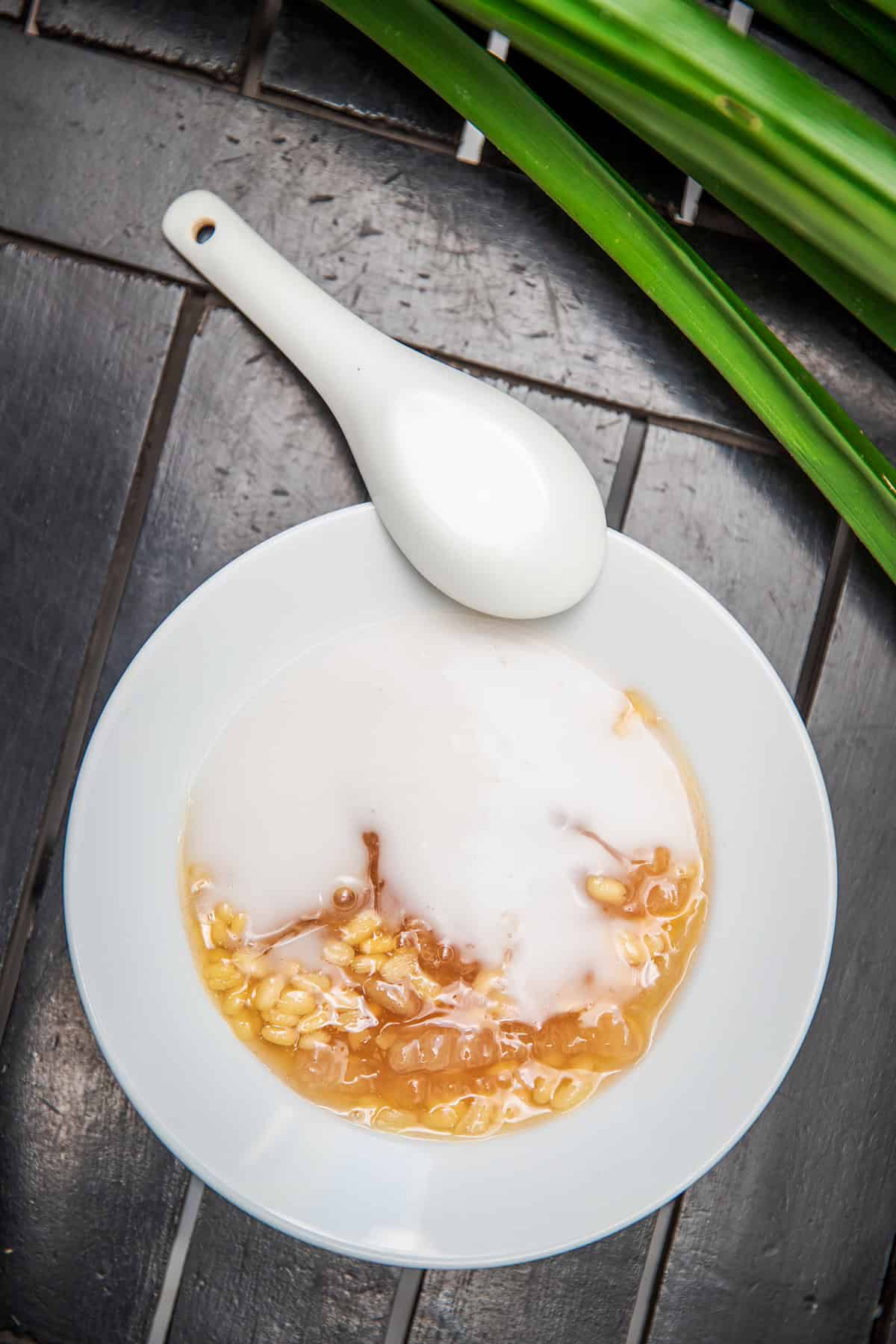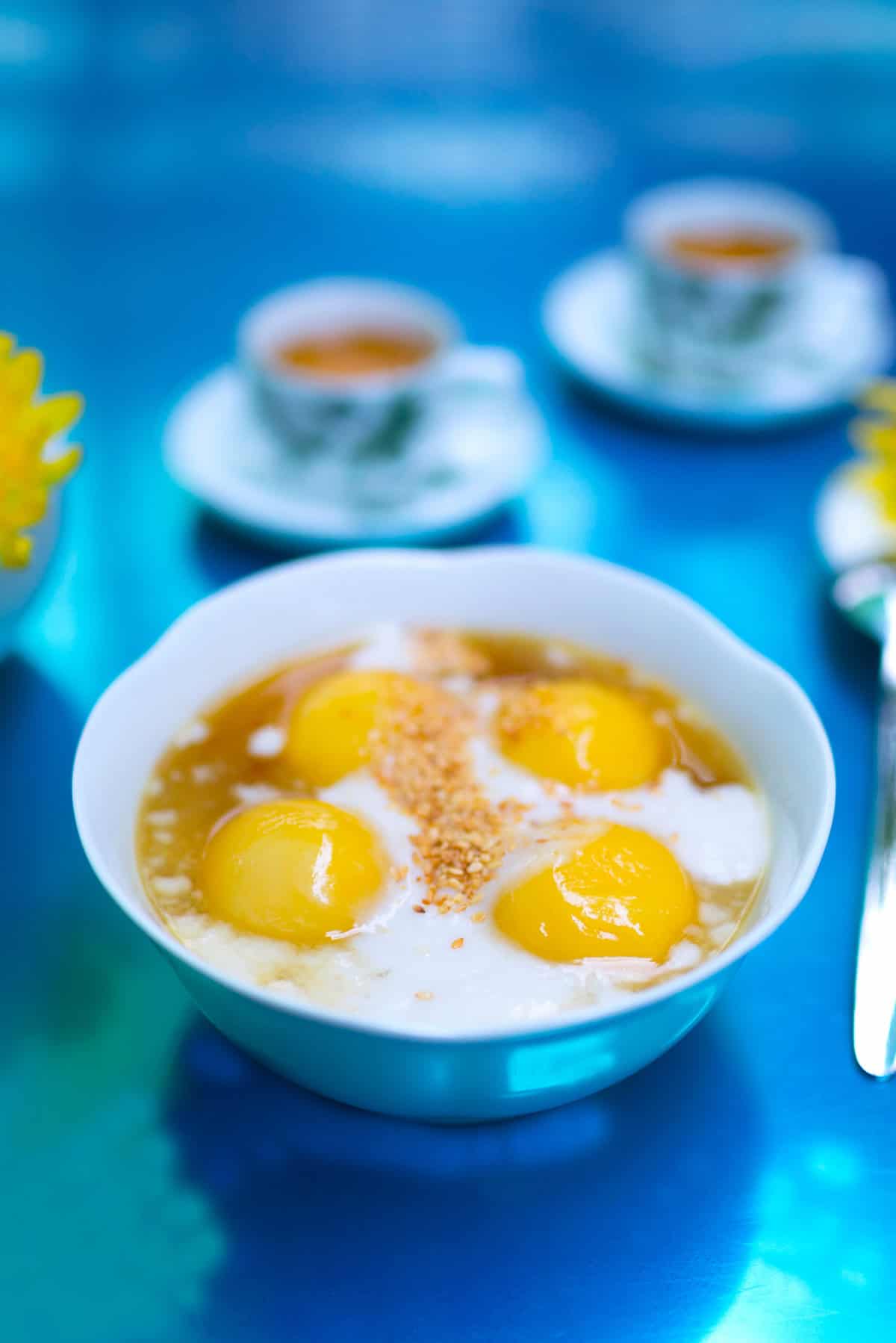Need a show-stopping dessert that’s easy to make and packed with flavor? Chè Sương Sa Hạt Lựu offers a mix of textures, from chewy jelly and crunchy water chestnut to smooth coconut milk, making it a delightful treat for your taste buds. Discover how to make this Vietnamese classic and enjoy a dessert that’s as fun to eat as it is to prepare.
Ingredients
- Agar-agar mixture
- 200g water chestnut, diced
- 250g tapioca starch
- 70g white sugar
- Natural color ingredients (e.g., beetroots for red, pandan leaves for green)
- Additional components
- A package of grass jelly or glass jelly flour, available at Vietnamese markets
- 100g green bean, cooked
- Coconut milk for serving
Instructions
- Preparing the water chestnuts
- Dice water chestnuts into small cubes.
- Coat them with tapioca starch.
- Creating colored jelly
- Mix diced, coated chestnuts with each natural food dye separately.
- Boil them in water until they float.
- Combining ingredients
- Prepare agar-agar mixture according to package instructions.
- Mix all ingredients together.
- Final assembly
- Cook green beans until soft.
- Let everything cool, then combine in a serving bowl.
- Add coconut milk before serving.
Tasting Notes
Chè Sương Sa Hạt Lựu offers a textural delight. The crunch of water chestnuts mingles with the chewiness of jelly cubes. Sweet coconut milk ties everything together. Its vibrant appearance is as enjoyable as its taste. Each layer provides a distinct texture and flavor. The combination of sweetness and natural ingredients creates a refreshing dessert experience for any occasion.
Similar Dessert
Similar to Chè Sương Sa Hạt Lựu is Chè Thái. This Thai-inspired dessert also uses colorful jellies and tropical fruits, served with sweetened coconut milk. Bánh Da Lợn, a steamed layer cake, shares the colorful, jelly-like characteristics but with a thicker consistency. Chè Ba Màu consists of three layers, focusing on layers rather than cubes.
History
This dessert has its roots in traditional Vietnamese cuisine. It blends influences from other Southeast Asian cooking styles. It reflects the tropical environment of Vietnam. The colorful aspect of this dessert is significant in Vietnamese culture, symbolizing joy and celebration. Such desserts are often enjoyed during family gatherings and festivals.
Quick Pro Tips
- Ingredients sourcing
- Use fresh paddan leaves and beetroots for the best colors.
- Preparation tips
- Allow jellies to cool completely for firm texture.
- Serve chilled for the best flavor experience.
- Customization
- Experiment with different natural dyes to customize colors.
- Add fruit pieces for an enhanced flavor profile.
Chill ingredients thoroughly before serving for the best effect.

